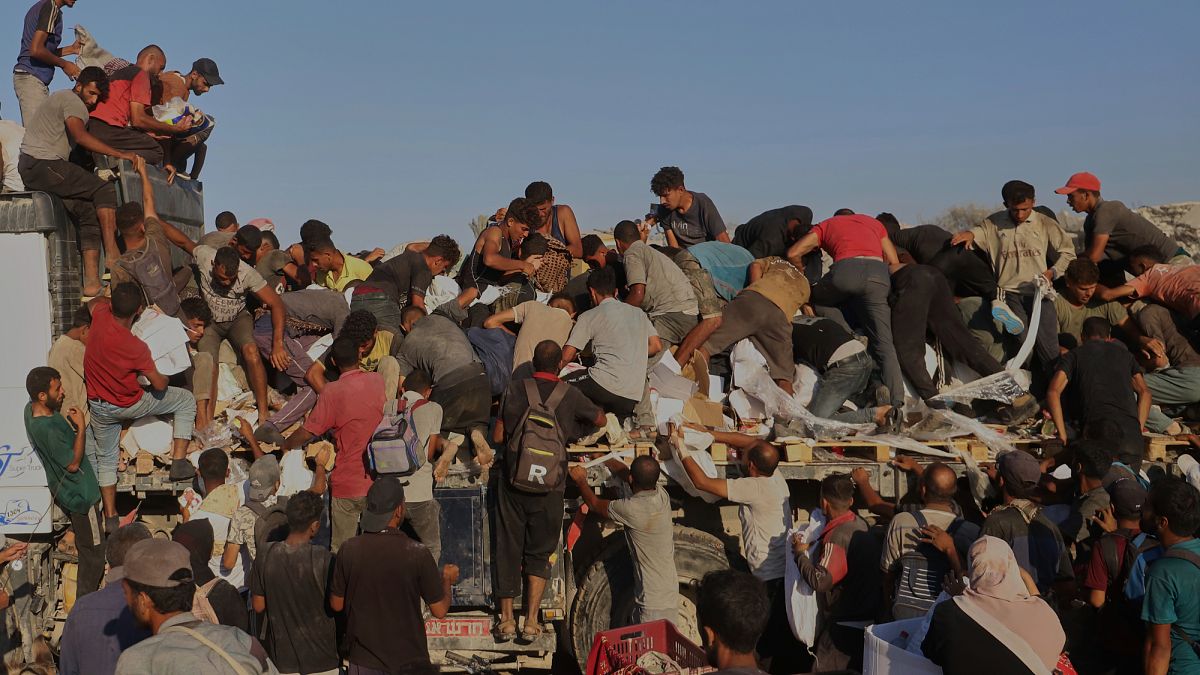

In the ever-evolving landscape of global affairs, the situation in Ukraine and Gaza presents a complex tapestry of challenges. In these regions, recent developments highlight the blend of military actions and humanitarian concerns, weaving together a narrative marked by resilience amidst adversity.
Beginning in Ukraine, the conflict has seen a fresh wave of action. Over recent days, Ukraine’s Security Service conducted a strategic operation targeting five Russian fighter jets at an airfield in annexed Crimea. This strike signifies a focused effort by Ukraine to disrupt the aerial capabilities integral to Russia’s operations. Meanwhile, the intensity of hostilities continued as Russian forces launched overnight strikes on the Kharkiv, Zaporizhzhia, Odesa, and Sumy regions, claiming at least five lives and inflicting damage on civilian infrastructure. The ripple effects of these events resonate through the local communities, impacting the daily lives of those who remain steadfast in these areas.
The Kharkiv region, in particular, found itself at the center of further hostility, as Russian drone strikes targeted a key logistics hub. Among the casualties was a mechanic working at a railway station, underscoring the far-reaching impact of the conflict on non-combatants. Tragically, the attack injured two children, further illustrating the indiscriminate nature of these assaults. The resilience of the affected communities remains palpable, as they navigate the multifaceted challenges thrust upon them.
Turning our attention to Gaza, we observe a similarly demanding scenario unfolding. The human cost of conflict has drawn the eyes of the international community, with Israel’s actions in the region prompting a range of responses. Prime Minister Benjamin Netanyahu has convened the security cabinet to deliberate over potential pathways forward, including the possibility of a full occupation of Gaza. This decision comes amid rising concerns over aid shortages and the severe impact of famine in the Strip.
A poignant snapshot of the situation can be seen in the story of a young boy searching through the rubble for his grandparents in the aftermath of an Israeli strike. This moment, captured in a widely-viewed video, encapsulates the personal and human dimensions of conflict, as families are torn apart and communities grapple with loss. In an environment where the delivery of essential food and medical aid remains severely restricted, the humanitarian crisis in Gaza is deepening, with children bearing the brunt of malnutrition and its dire consequences on their development.
As Israel maneuvers through its strategies, reports indicate that military movements continue, with Israeli tanks advancing into central Gaza. However, the broader implications of these actions remain subject to analysis and varied reactions on the geopolitical stage. The looming decision surrounding Gaza’s full occupation spotlights broader regional implications, as the local populace braces for potential paradigm shifts in their day-to-day lives.
The intertwining narratives of Ukraine and Gaza illustrate the profound complexities posed by contemporary conflicts. Each region grapples with its unique set of circumstances, yet common themes of resilience, survival, and the pursuit of peace bind these stories. As humanitarian efforts strive to alleviate some of the most acute needs, the global community remains vigilant, seeking pathways toward understanding, reconciliation, and lasting peace.
In this tapestry of turmoil, the stories of individuals—be they children navigating the shadows of war or leaders weighing the scales of peace—serve as potent reminders of our shared humanity. With each development, the world watches with hope, mindful of the challenges that lie ahead and the enduring strength of those who persist amid adversity.
Source: {link}
